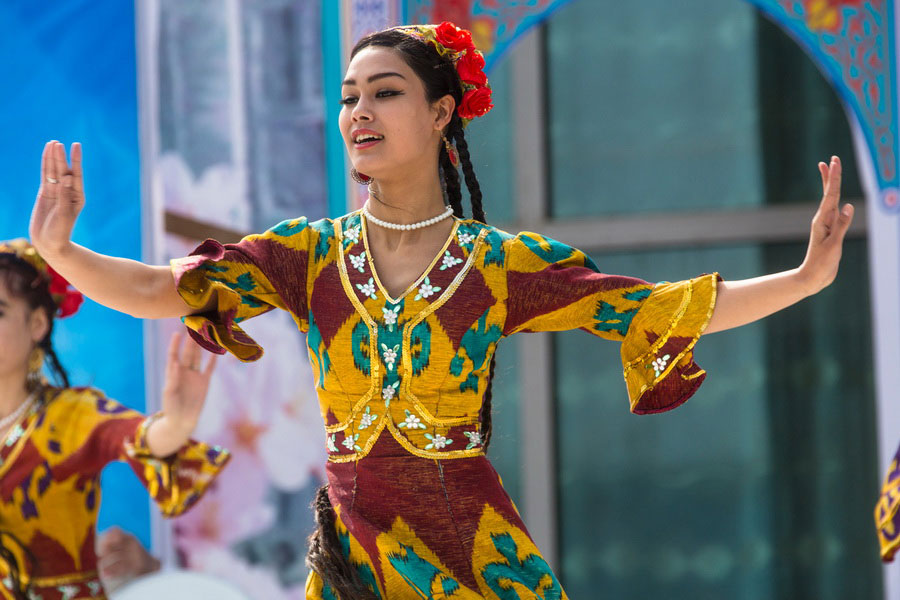
Tajikistan is home to two exceptional UNESCO World Heritage Sites and 17 monuments on the tentative list. We encourage every visitor to explore Sarazm and the Tajik National Park, and also take the time to discover other fascinating attractions. Additionally, Tajikistan possesses a unique intangible heritage, passed down through generations. Let's delve into these cultural treasures.
Intangible UNESCO Sites in Tajikistan
The UNESCO List of Intangible Cultural Heritage of Humanity in Tajikistan features ten sites:
- Shashmaqom music (recognized as a UNESCO World Heritage Site in 2003, and included on the representative list in 2008);
- Nowruz (recognized as a UNESCO Intangible Heritage Site in 2010, and included on the representative list in 2016 due to the expansion of countries);
- The traditional dish of oshi palav and its social and cultural context in Tajikistan (included 2016);
- Chakan, embroidery art in the Republic of Tajikistan (included 2018);
- Falak (included 2021);
- Telling tradition of Nasreddin Hodja/ Molla Nesreddin/ Molla Ependi/ Apendi/ Afendi Kozhanasyr Anecdotes (included in 2022);
- Sericulture and traditional production of silk for weaving (included in 2022);
- Sadeh/Sada celebration (inscribed in 2023);
- Art of illumination: Təzhib/Tazhib/Zarhalkori/Tezhip/Naqqoshlik (inscribed in 2023);
- Traditional knowledge and skills in the production of satin and adras fabrics (since 2023).
Shashmaqom music
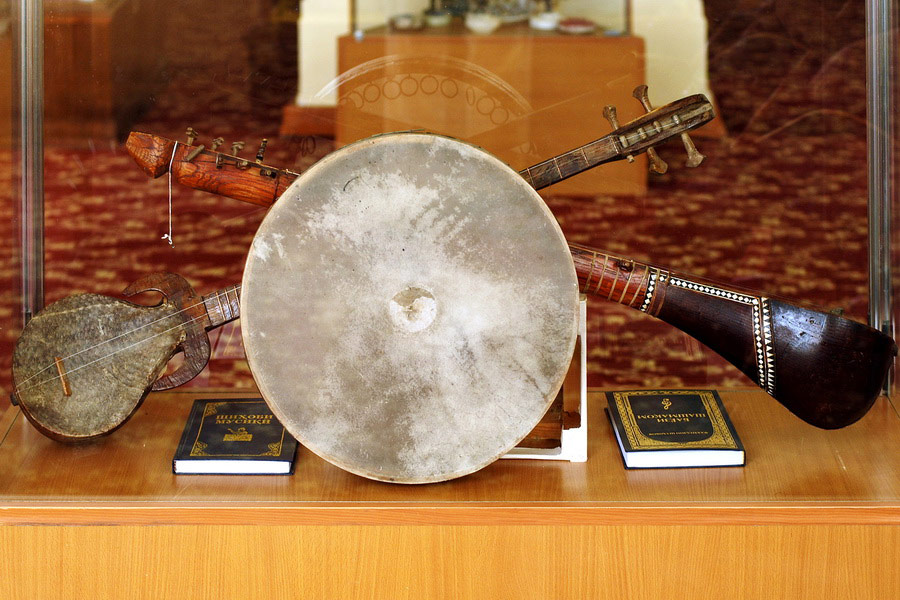
Shashmaqom is a traditional musical genre that originated in Tajikistan centuries ago. Some scholars believe it dates back to the pre-Islamic era. Shashmaqom music features singing accompanied by native musical instruments. Once performed during receptions at palaces, the genre maintains the traditions of classical singing, typically characterized by a melancholic tone. Shashmaqom music is also recognized and protected by UNESCO in Uzbekistan.
Nowruz
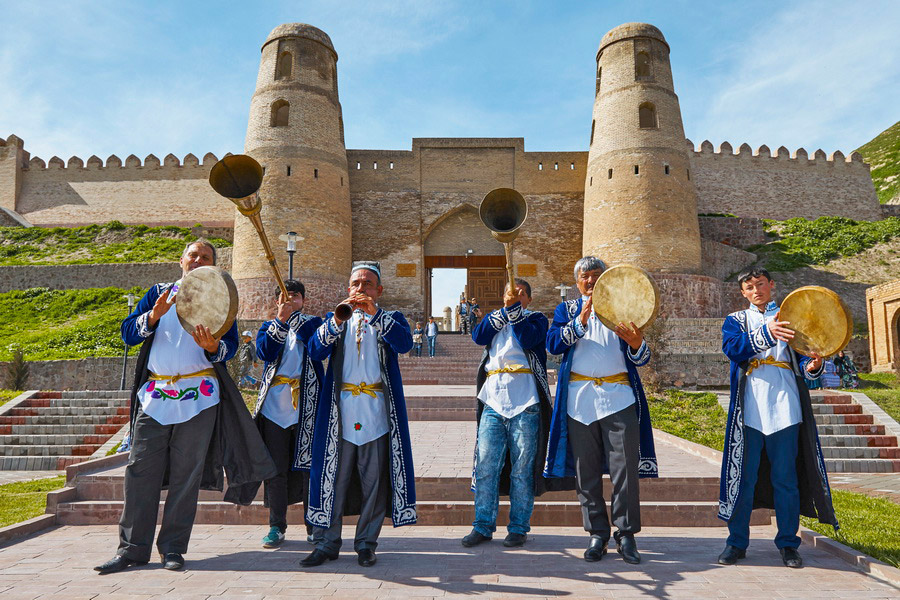
Nowruz is a globally recognized intangible heritage celebrated in several Eastern countries, including Tajikistan. Preparations for Nowruz involve thorough house cleaning, as a clean home symbolizes the anticipation of new beginnings and represents peace and prosperity. The holiday features the preparation of traditional dishes, family gatherings, and folk festivals. For centuries, Nowruz has united people of all ages, as mentioned in the famous "Shahnama" by Ferdowsi (from the early 11th century). Sumanak, the primary dish of Nowruz, is a sweet concoction made from sprouted wheat, prepared without any added sugar.
The traditional dish of oshi palav and its social and cultural context in Tajikistan
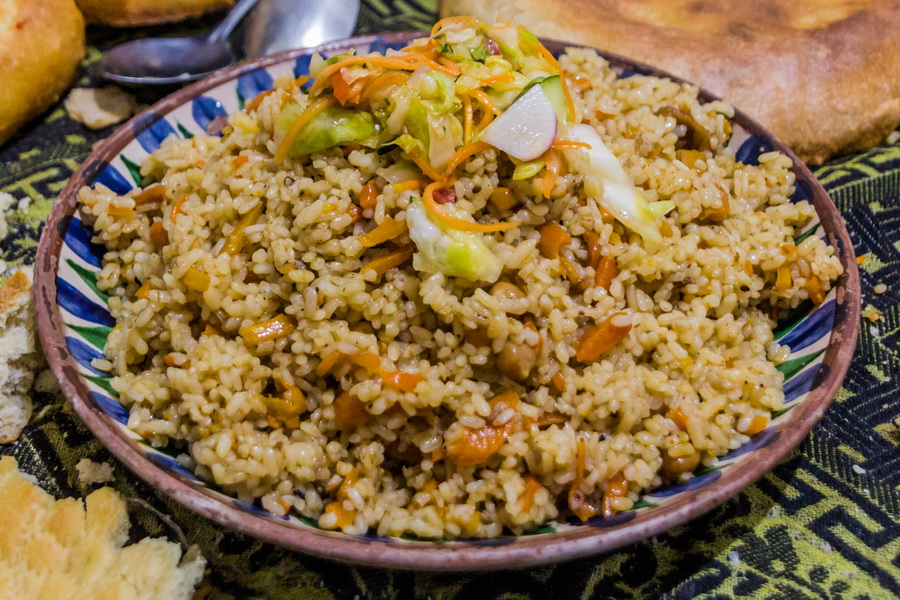
Pilaw is perhaps one of the most well-known dishes in Tajikistan, consisting of meat, rice, vegetables, and spices. It is commonly served at gatherings of five or more people, and can be enjoyed during both happy and solemn occasions. In Tajikistan, the preparation and serving of pilaw involve specific rituals, such as group cooking while singing, storytelling, and sharing knowledge and skills with one another. There are also popular sayings in the country that Tajiks hold dear, such as "If someone treats you to pilaw, respect them for 40 years," and "Without good pilaw, there can be no friendships."
Chakan, embroidery art in the Republic of Tajikistan
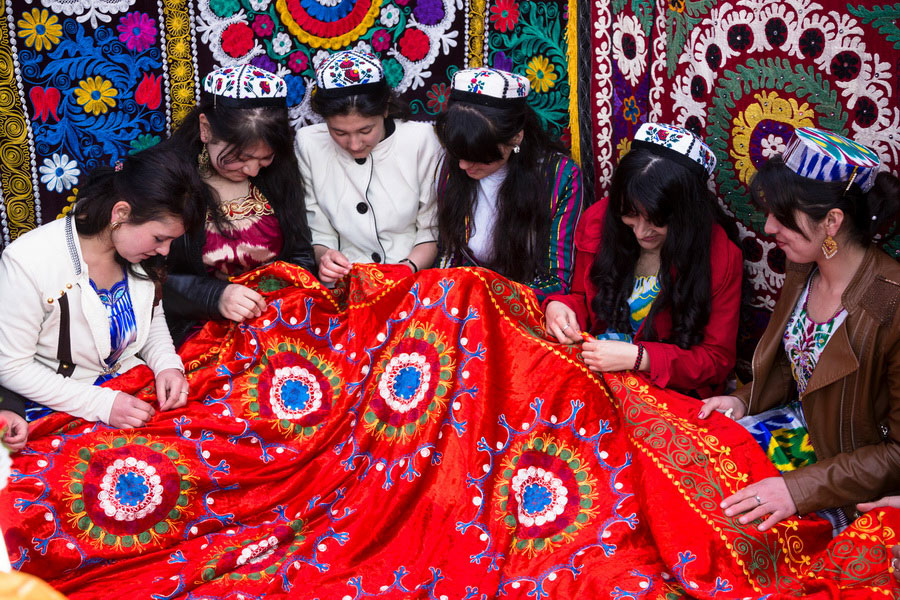
Chakan is a distinct art form in Tajikistan, traditionally practiced by women and girls. In essence, a chakan is a vibrant, hand-embroidered dress with long, wide sleeves, typically worn only on significant holidays due to the great reverence associated with the garment. The embroidery of traditional patterns can take about two weeks to complete, after which the fabric is cut and sewn into the dress. Nowadays, chakan embroidery can also be found on skullcaps, shirts, blankets, and pillows. These cherished items are often passed down from generation to generation.
Falak
Falak is a traditional, folkloric music genre originating from the mountainous regions of Tajikistan, performed by singers with a wide vocal range. The term "falak" translates to "sky" or "universe." Centuries ago, Tajiks used to sing their songs, either lamenting injustices or expressing gratitude for blessings, as if they were reaching out to the heavens. Falak is typically performed with the singer pressing one hand to their ear to better control their voice and hear themselves. While falak is often performed a cappella, it is increasingly accompanied by national musical instruments. Modern falaks include themes of love, separation, family, and homeland.
Telling tradition of Nasreddin Hodja Anecdotes
Khoja Nasreddin Afandi is a folkloric character known as a philosopher and sage. Some believe that he was a real person. Nasreddin always found ways to overcome even the most challenging situations, often ridiculing greedy and dishonest individuals. Khoja Nasreddin's stories are also recognized under UNESCO's auspices in six other countries around the world.
Sericulture and traditional production of silk for weaving
In Tajikistan, the practice of silk production dates back to ancient times and is still carried out today. Mulberry trees are grown to provide leaves as food for silkworms, which then create silk cocoons. Silk threads are extracted from these cocoons, and Tajiks are also involved in dyeing the yarns and crafting silk products. Handmade silk carpets and fabrics produced in Tajikistan are highly valued around the world. This intangible heritage is also present in Afghanistan, Azerbaijan, Iran, Turkey, Turkmenistan, and Uzbekistan.
Sadeh/Sada Celebration
Sada, a festival annually celebrated in Tajikistan on January 30th, has ancient roots. The timing is significant, marking 50 days and nights before the arrival of Navruz (the word "sada" translates to "hundred"). On this day, it's customary to prepare agricultural lands for spring planting. The celebration features lavish tables set with traditional Tajik dishes, dancing, singing, and wearing national attire. Notably, Sada is celebrated by people from all cultural and religious groups.
The Art of Illumination: Tezhib
Tezhib is the art of embellishing text with gold. Centuries ago, this calligraphy was used for religious manuscripts. The texts were written with natural pigment paints and then covered with gold leaf. Today, tezhib is not only used for the Quran and other books but also for miniatures and even walls. Additionally, tezhib is employed in the restoration of ancient texts and historical objects. UNESCO also protects this art in Uzbekistan.
Traditional Knowledge and Skills in Producing Atlas and Adras Fabrics
Tajikistan has been producing national fabrics, atlas and adras, for many centuries, with production secrets passed down through generations. Atlas is a silk fabric, while adras is made from silk and cotton. The threads for these fabrics are hand-dyed, and the fabrics themselves are also handmade. Producing a 50-centimeter wide piece of atlas or adras requires up to 50,000 threads, and an experienced craftsperson may spend up to 10 days on the task.
Tajikistan's intangible cultural heritage has long extended beyond its borders. Oshi palav, with over 200 varieties, is prepared by Tajiks far from their homeland, sharing their love for delicious food with millions worldwide. The national embroidery, chakan, and silk fabrics inspire globally renowned fashion designers. When traveling through Tajikistan, take a piece of its intangible heritage with you.
Learn more about the tangible UNESCO World Heritage Sites in Tajikistan.

